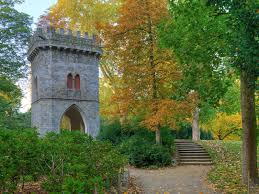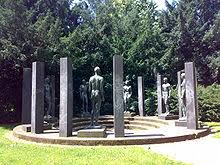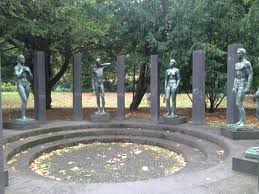For example, the client Tishman Speyer planned for the Opernturm 170 meters above the originally planned, and the area of 5000 square meters is planned as a new green area along the Bockenheimer Landstraße. The adjacent BHF Bank has moved the entrance to the underground parking lot and reorganized the current 5,000 square meters. Thus, the original access to the park was again open. Two large roads lead to a stone seat similar to the central resettlement of the Rothschild Palace. In addition, the stone of the goods was placed from 1818 with the name and emblem of the nobility Anselm von Rothschild, which was found during the renovation works on the tower.
In 1816, Amschel Mayer von Rothschild acquired a plot of land in Bockenheimer Landstraße, on the outskirts of Frankfurt, and built a kitchen garden with a garden shed. In 1832 he built the new classic Rothschild Palace, and an English garden was built with a new Gothic tower in ruined architecture. Again, in 1891, the garden and the palace were reconstructed. Over the years, the property was extended to 6 hectares and extended to Staufenstraße, bordered horizontally by Oberlindau and Reuterweg. In 1938, the Rothschild family had to sell the palace and gardens much less than the value. During World War II, the bombs destroyed the palace and large parts of the complex. The land was returned in 1951 to the Rothschild family, and the land was sold and built at the edges. The rest of the park serves
Since then urban green space.
General of the main renovation has changed the face of the park. It now covers about 4.5 hectares again, new trees, shrubs and hedges have been planted, and parts of the grass have been newly created. The winding paths always offer new perspectives. Behind a hill overlooking the renovated Gothic Tower, you will be invited to an attractive jogging court. Not changed, the seven bronze shapes of George Colby's "Ring of Statues" radiate peace and harmony.




